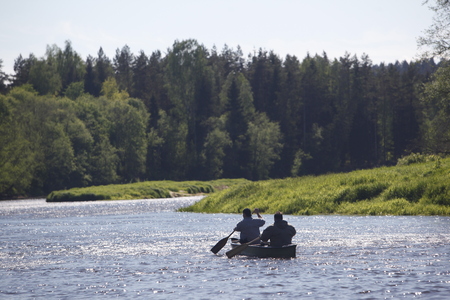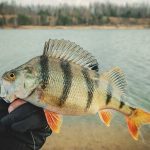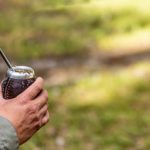1. Choosing the Right Baitcasting Gear for Bass
When it comes to bass fishing in American lakes and rivers, having the right baitcasting gear can make all the difference. Whether youre casting into deep clear waters of Lake Michigan or targeting largemouths along the banks of the Mississippi River, choosing the proper rod, reel, and line is essential for success. Lets break down what makes a great baitcasting setup for these diverse environments.
Understanding Rod Selection
Baitcasting rods come in various lengths, powers, and actions. Heres how to choose based on where and how you plan to fish:
| Environment | Rod Length | Power | Action |
|---|---|---|---|
| Large Lakes (Open Water) | 70″ – 76″ | Medium-Heavy | Fast |
| Rivers (With Cover) | 66″ – 70″ | Heavy | Extra Fast |
| Dense Vegetation/Structure | 70″ – 80″ | Heavy | Fast to Extra Fast |
Selecting the Right Baitcasting Reel
Your reel needs to match your rod and intended technique. Gear ratio is key here:
| Gear Ratio | Best Use Case |
|---|---|
| 5.4:1 – 6.4:1 (Low-Mid) | Casting crankbaits or spinnerbaits in lakes for steady retrieves. |
| 7.1:1 – 8.1:1 (High) | Punching through heavy cover in rivers; faster hooksets with jigs or Texas rigs. |
A smooth drag system and quality bearings are also important. Look for reels with at least 5+ stainless steel bearings for durability in freshwater conditions common across U.S. lakes and rivers.
Choosing Line for American Bass Waters
The type of fishing line you use should reflect both water clarity and structure. Here’s a quick guide:
| Line Type | When to Use It | Pound Test Range |
|---|---|---|
| Braided Line | Thick vegetation or heavy cover; ideal for riverbanks or lake beds with weeds. | 30–65 lb test |
| Fluorocarbon Line | Clear water situations like open lakes; stealthy presentations. | 12–20 lb test |
| Monofilament Line | Topwater baits; forgiving stretch in moderate cover areas. | 10–17 lb test |
| Condition | Why It Works |
|---|---|
| Calm water | Makes it easier to control skips and avoid splash |
| Tight cover | Lets you reach areas other casts cant access |
| Shady spots under structures | Bass often hide here during sunny days |
Pitching
Pitching allows you to place your bait quietly and accurately into heavy cover within close range. Its ideal for spooky bass that might get scared off by louder presentations.
How to Pitch:
- Start with about 2-3 feet of line out past your rod tip.
- Swing the bait underhand toward your target using a smooth motion.
- Your thumb should lightly feather the spool for better control.
Bait Choices for Pitching:
| Bait Type | Description |
|---|---|
| Texas-rigged soft plastics | Easily slides through weeds and grass without snagging |
| Casting jigs | Adds bulk and profile to entice bigger bites near structure |
| Craw-style baits | Mimics natural prey hiding in cover |
Flipping
If youre working extremely shallow water or thick vegetation, flipping gives you pinpoint accuracy without needing to make a full cast. This quiet presentation is perfect when bass are pressured or inactive.
How to Flip:
- Pull out a few feet of line and hold it in your non-dominant hand.
- Swing the bait toward your target while feeding line out manually.
- This keeps you stealthy and accurate when placing lures near structure.
Main Differences Between Pitching and Flipping:
| Technique | Main Feature | Ideal Distance |
|---|---|---|
| Pitching | Casting motion with spool engaged | 10–30 feet from target |
| Flipping | No real cast; uses controlled line feed | Less than 15 feet from target |
The key with all these techniques is practice. The more time you spend dialing in your skipping, pitching, and flipping skills, the more confident youll become at placing lures exactly where big bass live—without scaring them off. Mastering precision casting helps you fish smarter, not harder, especially in challenging conditions with heavy cover or pressured waters.
![]()
3. Mastering Lure Control and Retrieval
Once you’ve got your baitcasting setup dialed in, the next step is learning how to control your lure and retrieve it in a way that triggers aggressive strikes from bass. In American lakes and rivers, both largemouth and smallmouth bass respond differently depending on the season, water clarity, temperature, and the type of forage present. That’s why it’s important to understand how to work different types of lures using varied retrieval techniques.
Understanding Different Lure Types
Each type of lure has its own unique action and best-use scenario. Here’s a quick breakdown:
| Lure Type | Best Use | Primary Bass Target |
|---|---|---|
| Jigs | Structure fishing, heavy cover, slow presentations | Largemouth Bass |
| Crankbaits | Casting along drop-offs, covering water quickly | Both Largemouth & Smallmouth |
| Soft Plastics | Finesse fishing, pressured waters, clear conditions | Smallmouth Bass |
Retrieval Techniques That Trigger Reaction Strikes
Bass often strike out of instinct rather than hunger. Using the right retrieval technique can make all the difference. Below are several proven methods:
Hop and Pause (Great for Jigs)
Cast near structure like rocks or submerged timber. Let the jig sink to the bottom, then give it a short hop with your rod tip followed by a pause. This mimics a crawfish or injured baitfish.
Stop-and-Go (Perfect for Crankbaits)
This method imitates a fleeing baitfish. Retrieve your crankbait steadily for a few feet, then pause briefly before continuing. The sudden stop often triggers reaction bites.
Drag and Shake (Ideal for Soft Plastics)
This finesse approach works well when bass are finicky. Slowly drag the lure along the bottom while occasionally shaking your rod tip to add subtle movement.
Matching Speed to Conditions
The speed of your retrieve can also affect how bass react. Use this general guide:
| Water Temperature | Recommended Retrieve Speed |
|---|---|
| Cold (Below 55°F) | Slow and subtle retrieves |
| Mild (55°F–70°F) | Moderate pace with pauses |
| Warm (Above 70°F) | Faster retrieves with erratic movements |
Pro Tip:
If youre not getting bites, vary your retrieve speed and pattern until you find what works that day. Bass behavior changes based on weather, time of day, and even boat traffic.
The Importance of Line Watching and Rod Feel
No matter what lure or technique youre using, pay close attention to your line and rod sensitivity. Many bites happen on the fall or during a pause — moments when you’re not actively moving the bait. Watch for subtle line twitches or unexpected tension changes, and be ready to set the hook quickly.
Gear Tip:
A sensitive rod with a fast action tip helps detect light bites better, especially when using soft plastics or jigs in deeper water.
By learning how to control different lures and mastering various retrieval methods, you’ll dramatically increase your chances of catching more bass in American lakes and rivers — especially those elusive trophy-sized ones.
4. Reading Water and Locating Bass
One of the most important skills in advanced baitcasting for bass fishing is learning how to read the water. This means understanding how different environmental factors—like structure, water temperature, and current flow—affect where bass are likely to be. When you know how to break down a lake or river, you can save time and focus your efforts on the highest-percentage spots.
Understanding Structure
Bass love structure because it offers cover and ambush points. Structure refers to both natural features like rocks, drop-offs, and submerged timber, as well as man-made items like docks and bridges. Heres a quick guide to common types of structure and how bass use them:
| Structure Type | Why Bass Like It |
|---|---|
| Docks | Provide shade and cover from predators; great during sunny days |
| Rock Piles | Hold heat and attract baitfish; ideal during cooler months |
| Weed Beds | Shelter and oxygen-rich; excellent in summer |
| Drop-offs | Create depth changes where bass can ambush prey |
| Ledges & Points | Main travel routes for feeding bass |
The Role of Water Temperature
Bass are cold-blooded, so their activity level is directly tied to water temperature. In American lakes and rivers, this varies widely by region and season. Here’s a simple breakdown of how temperature affects bass behavior:
| Water Temperature (°F) | Bass Behavior |
|---|---|
| Below 50°F | Lethargic; hold deep near stable structure; slow presentations work best |
| 50–65°F | Pre-spawn/spawn season; bass move shallow, aggressive feeding begins |
| 65–75°F | Post-spawn; bass scatter but stay near cover, topwater bite picks up |
| 75–85°F | Summer pattern; look for shade, deeper water during midday hours |
| >85°F | Bass become sluggish again; early morning or night fishing is more productive |
Reading Current Flow in Rivers and Reservoirs
If youre fishing moving water like rivers or tailraces below dams, current flow becomes a major factor. Bass position themselves facing upstream behind objects that break the current, such as boulders, logs, or bridge pilings. These spots allow them to conserve energy while waiting for food to drift by.
Tactics for Fishing Current:
- Target eddies and slack water just behind large rocks or bends in the river.
- Casts should be made upstream with your bait drifting naturally toward the fish.
- Baitcasting gear helps you place accurate casts into tight current seams where fish hide.
- Lures like crankbaits or jigs work well when bounced along the bottom with the flow.
Putting It All Together: High-Percentage Spots
The key to success in advanced baitcasting is combining all these elements—structure, temperature, and current—to locate high-percentage spots quickly. Here are some go-to areas based on conditions:
| Condition | Best Spot to Target Bass |
|---|---|
| Midsummer Afternoon (80°F+) | Docks with deep water access or shaded ledges near drop-offs |
| Spring Morning (55–65°F) | Sandy flats near spawning coves with isolated cover like stumps or grass patches |
| Crisp Fall Day (60°F) | Main lake points leading into coves; look for schools of shad nearby |
| Mild River Flow After Rainstorm | Eddies behind current breaks like laydowns or bridge supports |
The more time you spend analyzing the environment before making your first cast, the better your chances of hooking into quality bass using baitcasting gear. By reading the water effectively, youll not only catch more fish—youll fish smarter every time you hit the lake or river.
5. Adapting to Seasonal Patterns
Understanding how bass behave throughout the year is key to mastering advanced baitcasting techniques. Bass dont act the same in the spring as they do in the summer, fall, or winter. Their location, activity level, and feeding habits all change with the seasons—and your baitcasting strategy should too.
Spring: Spawning Season
During early spring, bass move into shallow waters to prepare for spawning. Theyre more aggressive and protective during this time, which makes them easier targets for well-placed lures.
Baitcasting Tips:
- Use slow-moving soft plastics like creature baits or jigs near beds.
- Target shallow flats, especially around cover like stumps and grass lines.
- Precision casting is crucial—bass will strike to defend their territory.
Summer: Deep Water Transition
As temperatures rise, bass often move deeper to stay cool and find oxygen-rich water. They may suspend around structure like ledges, drop-offs, or submerged timber.
Baitcasting Tips:
- Use deep-diving crankbaits or Carolina rigs to reach fish in 10–20 feet of water.
- Focus on offshore structures and underwater humps using electronics.
- Speed up your retrieve slightly to match the active metabolism of summer bass.
Fall: Feeding Frenzy
In fall, bass chase schools of baitfish in preparation for winter. They return to shallower areas and become more aggressive feeders.
Baitcasting Tips:
- Throw fast-moving lures like spinnerbaits and lipless crankbaits.
- Target points, creek mouths, and coves where baitfish gather.
- Cover water quickly to locate active schools of bass.
Winter: Slow It Down
Cold water means sluggish bass. They conserve energy and are less likely to chase fast-moving lures.
Baitcasting Tips:
- Use finesse presentations like small jigs or suspending jerkbaits.
- Fish slowly along bottom structure such as rocks or brush piles.
- Make long casts and let your lure sit longer between movements.
Seasonal Baitcasting Strategy Overview
| Season | Bass Behavior | Baitcasting Strategy |
|---|---|---|
| Spring | Shallow water spawn; aggressive near beds | Soft plastics; accurate casting near cover |
| Summer | Migrate deeper; suspend over structure | Deep cranks, Carolina rigs; target ledges & humps |
| Fall | Chasing baitfish; feeding aggressively | Lipless cranks, spinnerbaits; cover water fast |
| Winter | Low activity; hold tight to structure | Suspend baits & jigs; slow retrieves near bottom |
No matter what time of year youre fishing American lakes or rivers, adjusting your baitcasting technique based on seasonal patterns can make all the difference. Paying attention to water temperature, bass behavior, and environmental clues will help you stay ahead of the game year-round.


